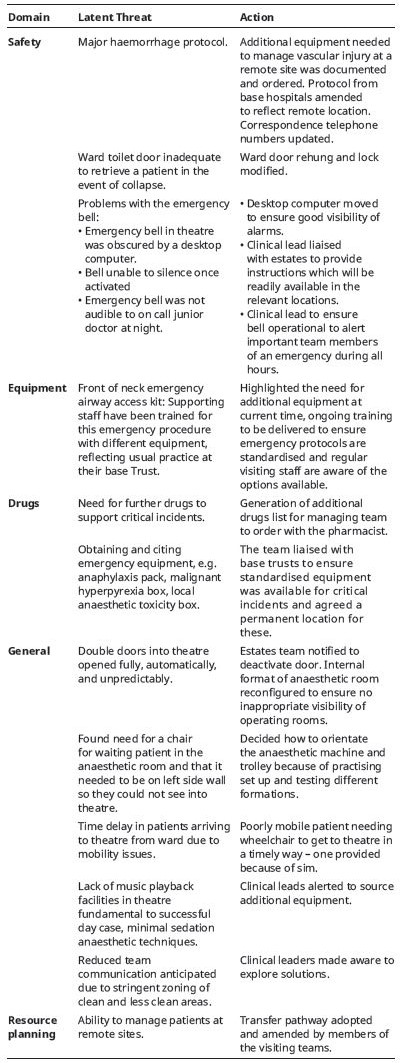
The Southwest Ambulatory Orthopaedic Centre (SWAOC) is a novel, collaborative, regional provision for elective day-case joint arthroplasty, with facilities for exceptional overnight stay. Reorientation of existing infrastructure, combined with the logistics of resource allocation, forced a small window for process assurance prior to the arrival of the first cohort of surgical patients. System testing is usually performed once equipment is finalised and in place [1], however, an early targeted opportunity to deliver simulation was offered to intelligently support the commissioning process within a dynamic timeframe. We aimed to undertake an early prospective assessment of the working environment at a novel orthopaedic centre using high-fidelity simulation.
Driven by project timeline requirements, early in-situ high-fidelity simulation was delivered concurrent to infrastructure finalisation. Multidisciplinary team simulation was undertaken in multiple locations including theatres, wards, and ancillary areas. Critical incidents and common clinical scenarios were ‘drilled’ in real time, debriefed, and re-run with real-time evaluation to identify safety concerns and explore quality improvement opportunities. Overseeing the commissioning, SWAOC stakeholders (n=6) consisted of anaesthetic and surgical consultants, clinical theatre managers, and a business manager. Stakeholders were surveyed for feedback throughout this evolution.
Stakeholders reported preliminary and subsequent simulations as beneficial. It was stated that early simulation supports the discovery of ‘hidden problems’ informing timely modification of pathways and/or site design (Table 1). Identifying problems early during infrastructure delivery allowed for proactive discussion, smoother change management, time for re-simulation, and supported any infrastructure amendments to adhere to target timelines. Successful, rapid ingress through and egress from building entrances, and simulating real-time joint replacement surgery ensured confidence in proposed target timeframes. Directed corporate messaging with invested parties to highlight the success of the system testing reinforced wider assurance in the facility.

 |
High-fidelity in-situ simulation is a powerful, flexible and resource-inexpensive tool within clinical capability development. It permits agile but rigorous testing and analysis of systems within novel sites early in the development process, while changes are still possible. This capability can rapidly expose unrecognised or latent threats such as an inefficient clinical configuration, or a compromise in procedural space without posing risks to patients [2]. In performing targeted simulation ahead of when ‘traditional’ systems testing is usually performed, safety and quality improvements can be understood at more financially viable stages of capability generation and allow operational leaders to achieve timely decision-making.
1. Geis G, Pio B, Pendergrass T, Moyer M, Patterson M. Simulation to Assess the Safety of New Healthcare Teams and New Facilities. Simul Healthcare. 2011;6(3):125–133.
2. Kaba A, Barnes S. Commissioning simulations to test new healthcare facilities: a proactive and innovative approach to healthcare system safety. Adv Simul. 2019;4(1).